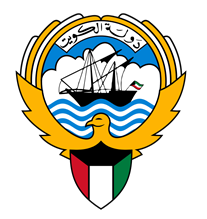Kuwait: Government
Key Figures
- Chief of State:
- Amir Nawaf Al-Ahmad Al-Jabir Al-Sabah
- Head of Government:
- Prime Minister Sheikh Ahmad Abdullah Al-Ahmad Al-Sabah
Overview
- Government Name:
- State of Kuwait
- Constitution:
- Adopted: 1962; Pillars of the Constitution are the sovereignty of the state, public freedom, and equality before the law.
- Government Type:
- Constitutional Emirate

Index of Economic Freedom
Country Risk Rating
Government Branches
| Main Powers | Election Process | Election Cycle 1 | |
|---|---|---|---|
| Executive | The emir appoints the prime minister, can dissolve parliament, and is the head of state. The prime minister is in charge of executing executive tasks for the emir. |
The emir is chosen from within the ruling family and is confirmed by parliamentary vote. The emir then appoints the prime minister and deputy prime ministers. |
Hereditary |
| Judicial | The constitutional court can dissolve the national assembly and is in charge of interpreting the constitution. |
Appointed by the emir upon recommendation of the supreme judicial council. |
Until dismissal by executive branch |
| Legislative | The national assembly is in charge of creating legislature, approving/disapproving the emir's appointments, and removing the emir from post. |
The National Assembly has 65 members, 50 members are elected by plurality vote in multi-member constituencies. |
4 years |
Regional Trade Blocs
International Organization Participation [2]
Environmental Agreements [3]
Tax Information [2]
- Tax Authority:
- Information not available
- Tax Name:
- Information not available
Sources:
- ElectionGuide http://www.electionguide.org/
- EY, http://www.ey.com
- CIA World Factbook, https://www.cia.gov/the-world-factbook/
- U.S. Bilateral Relations Fact Sheets http://www.state.gov/r/pa/ei/bgn/


